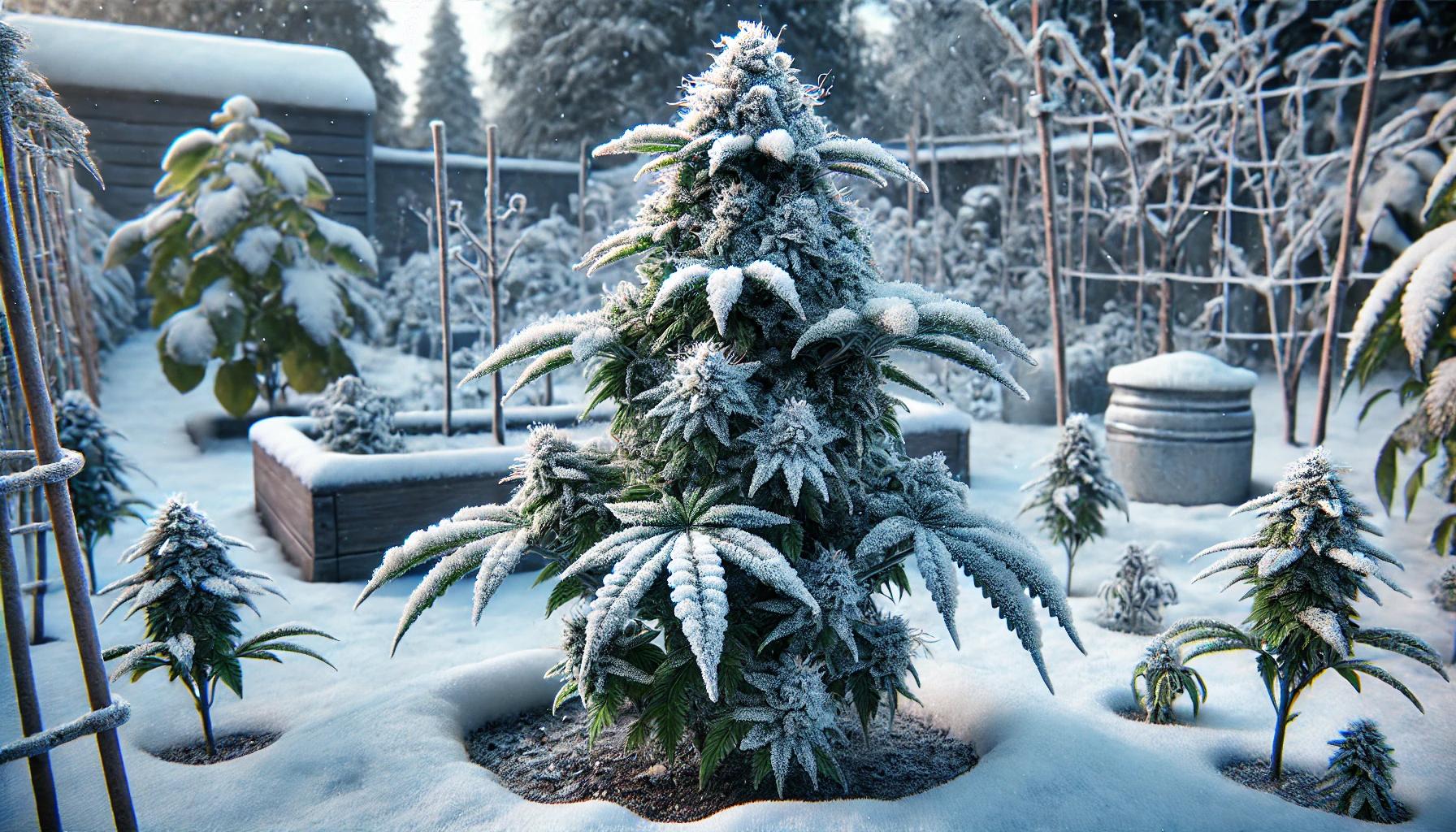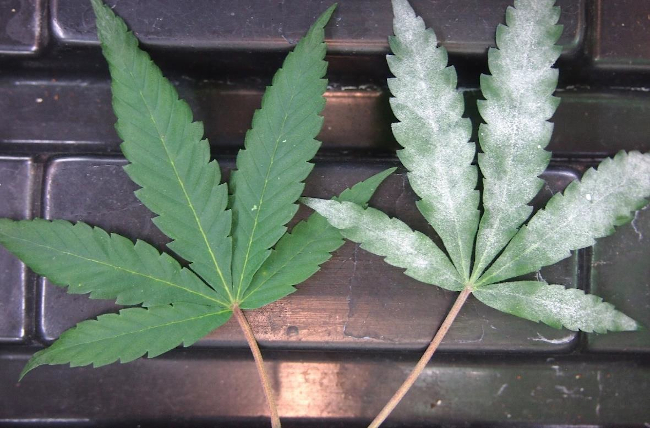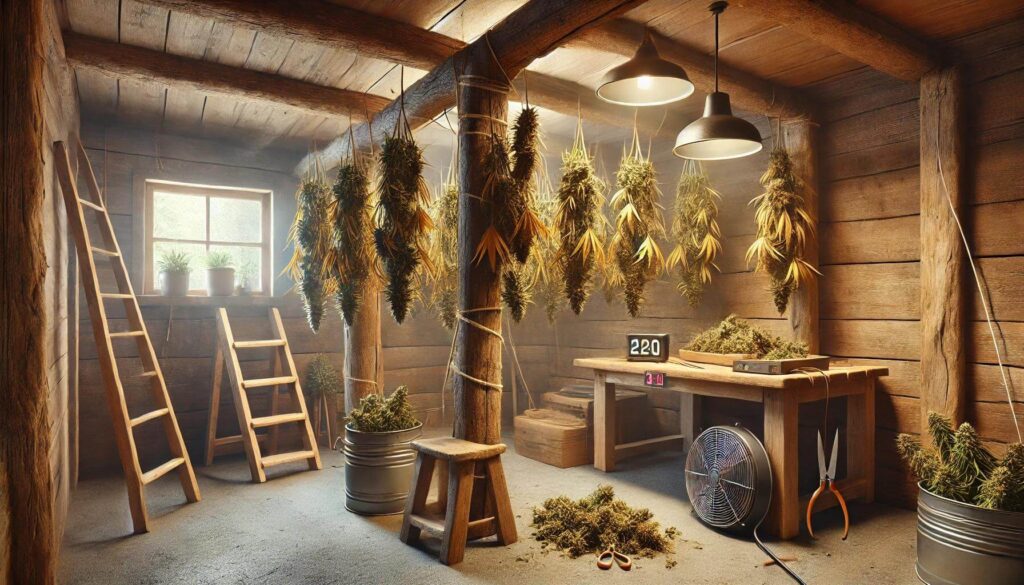Your basket is currently empty!
How to Grow Marijuana in Cold and Humid Climates

Growing cannabis in cold and humid climates may seem challenging, but with the right strategy, you can achieve a healthy and potent harvest. Low temperatures and high humidity can promote diseases, slow growth, and affect bud quality. However, with the right strain selection, proper substrate management, and specific techniques, it is entirely possible to achieve excellent results.
In this article, we will delve into every key aspect of how to grow marijuana in cold and humid climates and how to overcome the challenges these conditions may present.
1. Choosing the Best Strains for Cold and Humid Climates
The first step in learning how to grow marijuana in cold and humid climates is selecting the right genetics. Not all cannabis strains react the same way to cold and humidity. Some varieties are better adapted and can resist mold and low temperatures without sacrificing quality.
What to Look for in a Strain for Cold and Humid Climates?
- Mold Resistance: In humid climates, the main threat is mold, so you should choose strains with an open structure and good natural ventilation.
- Short Flowering Time: The less time the plant is exposed to adverse conditions, the lower the risk of developing problems.
- Indica or Autoflowering Dominance: Indica strains usually have compact structures that withstand cold well, while autoflowering varieties can complete their cycle before the weather worsens.
Recommended Strain Examples:
- Resilient Autoflowers: BlueDawg Auto, Girl Scout Cookies Auto, Papaya Kush Auto.
- Indica-dominant strains: Florida Mintz, Gelato Pie, Mendocino Moonrock.
- Mold-resistant strains: Cheesedawg, Honey Haze, Banana Sherbet.
2. Location and Crop Protection
In a cold and humid environment, location is key to ensuring your plants receive enough light and protection from excessive moisture. Whether growing indoors or outdoors, there are strategies you can apply to minimize problems and learn how to grow marijuana in cold and humid climates without setbacks.
If you're growing outdoors:
- Look for a location with good sun exposure. In cold climates, every ray of sunlight matters. Choose an elevated area or one with good sun orientation.
- Avoid low areas and places with moisture buildup. Valleys or poorly drained areas retain water and increase humidity, which promotes mold growth.
- Use protective structures. A greenhouse or plastic cover can help maintain stable temperatures and prevent excess moisture in the buds.
Si cultivas en interior:
- Ensure good ventilation. Use exhaust fans and circulation fans to keep air moving and reduce relative humidity.
- Mantén una temperatura estable. Las lámparas HPS pueden generar calor extra en invierno, mientras que un calefactor programable puede ser útil en noches frías.
- Control humidity with dehumidifiers. If humidity exceeds 60% during flowering, buds become vulnerable to mold.
3. Substrate and Watering Management
Excess moisture in the soil is a common issue in cold and humid climates, as it can cause root rot and promote mold development. If you want to learn how to grow marijuana in cold and humid climates effectively, optimizing the substrate and watering is crucial.
How to Prepare an Ideal Substrate
- Usa una mezcla ligera con perlita, fibra de coco o vermiculita para mejorar la aireación y el drenaje.
- Evita suelos arcillosos o compactos, ya que retienen demasiada humedad.
- Añade micorrizas y trichodermas al sustrato para fortalecer las raíces y evitar infecciones fúngicas.
Riego en climas fríos y húmedos
- Water only when necessary. A good trick is to insert a toothpick into the soil; if it comes out dry, it's time to water.
- Avoid watering during the coldest hours of the day. If you water in the morning, the plant has time to absorb the water before temperatures drop too much.
- Use room temperature water. Cold water can cause thermal shock to the roots and slow down growth.
4. Mold and Pest Prevention
Mold and pests can spread quickly in humid environments, so it’s important to take preventive measures from the start.
How to Prevent Mold (Botrytis and Powdery Mildew)

- Keep relative humidity below 50% during flowering. During the vegetative stage it can be slightly higher, but it should be reduced in the final stage.
- Use fans to prevent condensation. If the air becomes stagnant, moisture will accumulate in the buds.
- Apply preventive treatments like horsetail or neem oil. These are natural products that strengthen the plant's resistance.
- Remove lower leaves and poorly ventilated areas. This will prevent moisture from getting trapped.
5. How to Protect Plants from Frost
Frost can be deadly for a cannabis plant. If you're growing outdoors, follow these recommendations to minimize damage:
- Cover your plants with thermal mesh or gardening blankets. This creates a barrier against nighttime cold.
- Lightly water the soil before a frost. Water retains heat and can help prevent the roots from freezing.
- If temperatures drop too low, mov potted plants indoors overnight. If you're growing in the ground, try using temporary plastic covers.
6. Harvesting and Drying in Cold and Humid Environments

Drying buds is a critical step in humid climates. Poor drying can ruin the entire harvest.
- Dry the buds in a room with constant ventilation and controlled humidity (40–50%).
- Do not dry in a damp basement or against cold walls. This promotes condensation and mold growth.
- Use dehumidifiers if necessary and keep the temperature between 18–22°C.
Conclusion
Knowing how to grow marijuana in cold and humid climates requires planning and preventive measures, but it is completely achievable with the right strategy. Selecting resistant strains, optimizing watering and substrate, preventing pests and mold, and properly drying the buds will make all the difference in your harvest quality.
If you're looking for seeds adapted to these conditions, visit our online store and choose from the best options. 🌿🔥 Happy growing!
22
Leave a Reply
You must be logged in to post a comment.